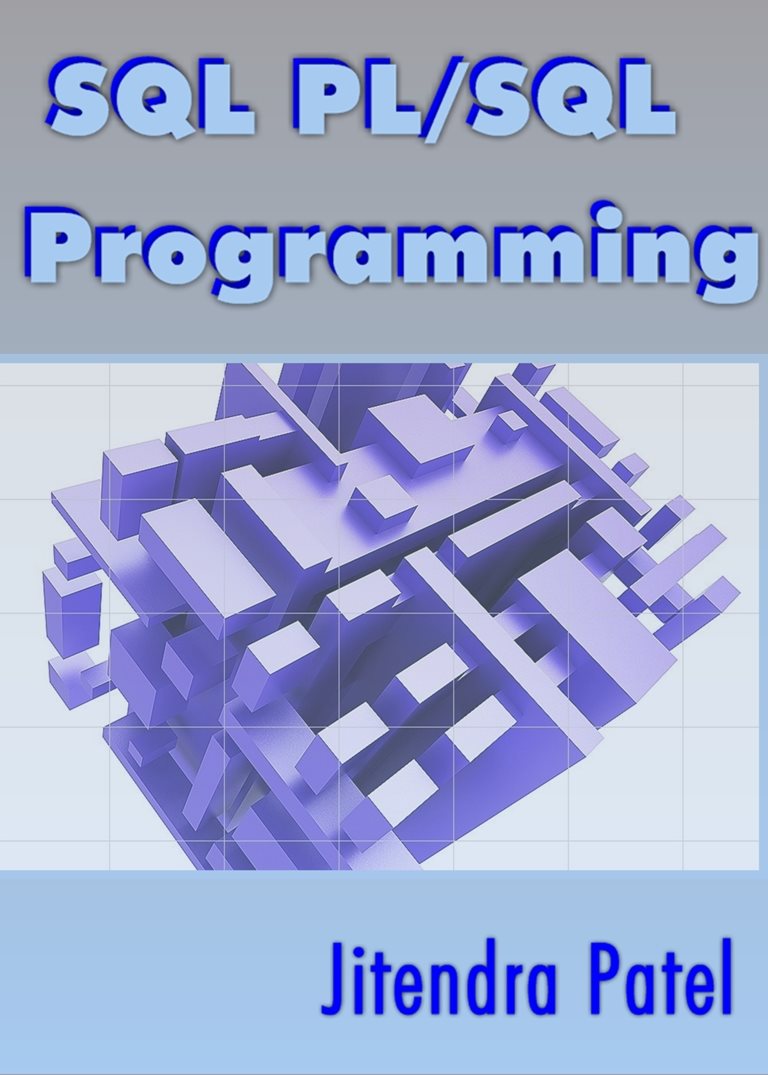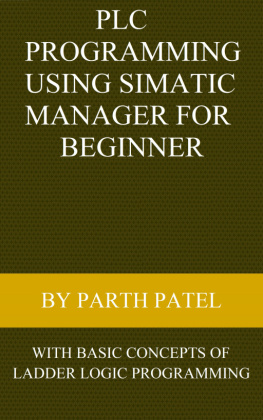Jitendra Patel - SQL PL/SQL Programming
Here you can read online Jitendra Patel - SQL PL/SQL Programming full text of the book (entire story) in english for free. Download pdf and epub, get meaning, cover and reviews about this ebook. year: 2013, publisher: eBookIt.com, genre: Home and family. Description of the work, (preface) as well as reviews are available. Best literature library LitArk.com created for fans of good reading and offers a wide selection of genres:
Romance novel
Science fiction
Adventure
Detective
Science
History
Home and family
Prose
Art
Politics
Computer
Non-fiction
Religion
Business
Children
Humor
Choose a favorite category and find really read worthwhile books. Enjoy immersion in the world of imagination, feel the emotions of the characters or learn something new for yourself, make an fascinating discovery.

- Book:SQL PL/SQL Programming
- Author:
- Publisher:eBookIt.com
- Genre:
- Year:2013
- Rating:3 / 5
- Favourites:Add to favourites
- Your mark:
- 60
- 1
- 2
- 3
- 4
- 5
SQL PL/SQL Programming: summary, description and annotation
We offer to read an annotation, description, summary or preface (depends on what the author of the book "SQL PL/SQL Programming" wrote himself). If you haven't found the necessary information about the book — write in the comments, we will try to find it.
SQL PL/SQL Programming — read online for free the complete book (whole text) full work
Below is the text of the book, divided by pages. System saving the place of the last page read, allows you to conveniently read the book "SQL PL/SQL Programming" online for free, without having to search again every time where you left off. Put a bookmark, and you can go to the page where you finished reading at any time.
Font size:
Interval:
Bookmark:

Nor is any liability assumed for damages resulting from the use of the information contained herein.
Warning and Disclaimer Every effort has been made to make this book as complete and as accurate as possible, but no warranty or fitness is implied. The information provided is on an "as is" basis. The authors and the publisher shall have neither liability nor responsibility to any person or entity with respect to any loss or damages arising from the information contained in this book. Contents
Most database management systems implement a majority of one of these standards and add their proprietary extensions. SQL allows the retrieval, insertion, updating, and deletion of data. A database management system also includes management and administrative functions. Most -- if not all -- implementations also include a Command-line Interface (SQL/CLI) that allows for the entry and execution of the language commands, as opposed to only providing an API intended for access from a GUI. The first version of SQL was developed at IBM by Donald D. Chamberlin and Raymond F.
Boyce in the early 1970s. This version, initially called SEQUEL, was designed to manipulate and retrieve data stored in IBM's original relational database product, System R. IBM patented their version of SQL in 1985, while the SQL language was not formally standardized until 1986, by the American National Standards Institute (ANSI) as SQL-86. Subsequent versions of the SQL standard have been released by ANSI and as International Organization for Standardization (ISO) standards. Originally designed as a declarative query and data manipulation language, variations of SQL have been created by SQL database management system (DBMS) vendors that add procedural constructs, control-of-flow statements, user-defined data types, and various other language extensions. With the release of the SQL:1999 standard, many such extensions were formally adopted as part of the SQL language via the SQL Persistent Stored Modules (SQL/PSM) portion of the standard.
Common criticisms of SQL include a perceived lack of cross-platform portability between vendors, inappropriate handling of missing data (see Null (SQL)), and unnecessarily complex and occasionally ambiguous language grammar and semantics.
It allows statements to be grouped together into logical transactions. TCL Commands: Commit, Rollback, Save point COMMIT - save work done SAVEPOINT - identify a point in a transaction to which you can later roll back ROLLBACK - restore database to original since the last COMMIT
Font size:
Interval:
Bookmark:
Similar books «SQL PL/SQL Programming»
Look at similar books to SQL PL/SQL Programming. We have selected literature similar in name and meaning in the hope of providing readers with more options to find new, interesting, not yet read works.
Discussion, reviews of the book SQL PL/SQL Programming and just readers' own opinions. Leave your comments, write what you think about the work, its meaning or the main characters. Specify what exactly you liked and what you didn't like, and why you think so.







